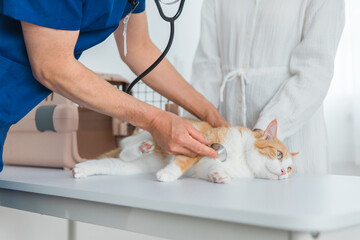
FIP Treatment Medications Explained | New Advances in Feline Infectious Peritonitis (FIP) Prevention and Therapy
IntroductionFeline Infectious Peritonitis (FIP) is one of the most challenging diseases in feline medicine. For decades, a diagnosis of FIP was almost always fatal, leaving veterinarians and cat owners with no effective therapeutic options. However, with the discovery and application of new antiviral drugs, the landscape has changed dramatically. Today, FIP is no longer an automatic death sentence, and treatment outcomes continue to improve. This article provides a comprehensive overview of the medications used to treat FIP, their mechanisms, clinical effectiveness, and the latest prevention strategies.1. Understanding FIP and Why Treatment Was DifficultFIP is caused by mutations of the feline coronavirus (FCoV). While most cats infected with FCoV show no or mild symptoms, in some cases the virus mutates and gains the ability to replicate within immune cells, spreading throughout the body and causing severe inflammation. This leads to two primary clinical forms: the wet (effusive) form, characterized by fluid accumulation in the abdomen or chest, and the dry (non-effusive) form, which can involve the eyes, nervous system, and various organs. Historically, the difficulty in treating FIP lay in the fact that the virus hides within immune cells, making it extremely hard to target and eliminate. Supportive care such as fluids, anti-inflammatories, and immune boosters could alleviate symptoms temporarily, but none of these therapies addressed the underlying viral replication.2. Antiviral Medications: The BreakthroughThe true revolution in FIP treatment came with the discovery of nucleoside analogs, specifically GS-441524, a compound closely related to Remdesivir. GS-441524 inhibits viral RNA polymerase, effectively blocking viral replication within the cat’s body. This allowed, for the first time, not just symptom management but true disease remission and recovery.GS-441524: The foundational molecule for FIP therapy. Administered orally or via injection, it directly inhibits the replication of FCoV. Clinical studies have shown survival rates exceeding 80–90% in cats treated with GS-441524.Pronidesivir (NeoFipronis®): A veterinary-approved oral formulation of GS-441524. Unlike injectable forms, oral tablets are easier to administer, reduce stress for cats and owners, and are highly effective in long-term therapy.Remdesivir: Approved for human use against COVID-19, it metabolizes into GS-441524 in the body. In some regions, Remdesivir has been used in veterinary practice as an alternative, especially when GS-441524 was not readily available.3. Clinical Effectiveness of Antiviral TreatmentTreatment success depends on several factors, including the form of FIP, the stage at which therapy begins, and the correct dosage.Standard Treatment Protocols: Most cases require at least 12 weeks (84 days) of continuous therapy. Dosing is weight-based, usually around 10–15 mg/kg/day for effusive and non-effusive forms, while neurological and ocular cases may need 20 mg/kg/day or higher.Response to Treatment: Many cats show rapid improvement within days to weeks of starting therapy. Appetite, energy, and body weight increase, fever resolves, and fluid accumulation diminishes.Long-Term Recovery: With a full and properly monitored treatment course, most cats achieve long-term remission. Relapse is possible if the treatment is stopped prematurely or dosing is insufficient.4. Supportive Medications and Adjunct TherapiesWhile antivirals form the cornerstone of treatment, additional medications can play important roles in improving quality of life and overall survival.Anti-inflammatories: Corticosteroids were traditionally used to reduce inflammation, but with effective antivirals available, their role has diminished. They may still be helpful for specific cases of severe inflammation.Immune Modulators: Interferons and other immune-supporting agents have been tried with variable success. They are not curative but can provide supportive benefits.Nutritional Supplements: Taurine, omega-3 fatty acids, vitamin E, and antioxidants support overall health and recovery. Probiotics and gut-protective supplements are also used to reduce secondary infections and gastrointestinal upset.5. Monitoring During TreatmentEffective therapy requires careful monitoring to ensure success and detect complications early.Bloodwork: Regular complete blood counts (CBC) and biochemistry panels are recommended to track anemia, protein levels, and organ function.Body Weight and Appetite: Monitoring weight gain and food intake provides a direct measure of recovery.Neurological and Ocular Signs: In cases with central nervous system or eye involvement, ongoing assessment of symptoms is vital to adjust dosing.6. Challenges and ConsiderationsWhile treatment outcomes are promising, challenges remainCost: Long treatment durations and high daily doses can make therapy expensive.Access to Medication: In some regions, legal access to GS-441524 or veterinary formulations may still be limited.Owner Compliance: Daily medication for 12 weeks requires strong commitment from cat owners, as missed doses can reduce effectiveness.7. Prevention StrategiesSince not all cats exposed to feline coronavirus develop FIP, prevention focuses on reducing overall exposure and maintaining strong immune health.Hygiene in Multi-Cat Households: Clean litter boxes frequently and avoid overcrowding.Reduce Stress: Stress weakens immunity and increases the risk of viral mutation. Provide stable, low-stress environments.Responsible Breeding: Catteries should manage population density carefully and avoid breeding cats with a history of FIP.General Wellness: Proper nutrition, regular veterinary visits, and vaccination against other infectious diseases strengthen overall health and resistance.8. The Future of FIP TreatmentResearch into FIP therapies continues to evolve. Combination treatments, new delivery methods, and improvements in accessibility promise even better outcomes. In addition, efforts to develop effective vaccines are ongoing, although none are yet universally reliable. With continued scientific progress, FIP may soon become not just a treatable but a preventable disease.ConclusionThe story of FIP has shifted from despair to hope. Once considered untreatable, it is now a disease with high survival rates when managed correctly. Antiviral medications such as GS-441524 and Pronidesivir (NeoFipronis®) represent a medical breakthrough, offering cats worldwide a chance at full recovery. Alongside antivirals, supportive therapies, preventive strategies, and responsible cat ownership all contribute to better outcomes. For veterinarians and cat owners alike, knowledge of these treatments and commitment to early diagnosis and full-course therapy are the keys to success.
Read More »
08/21/2025